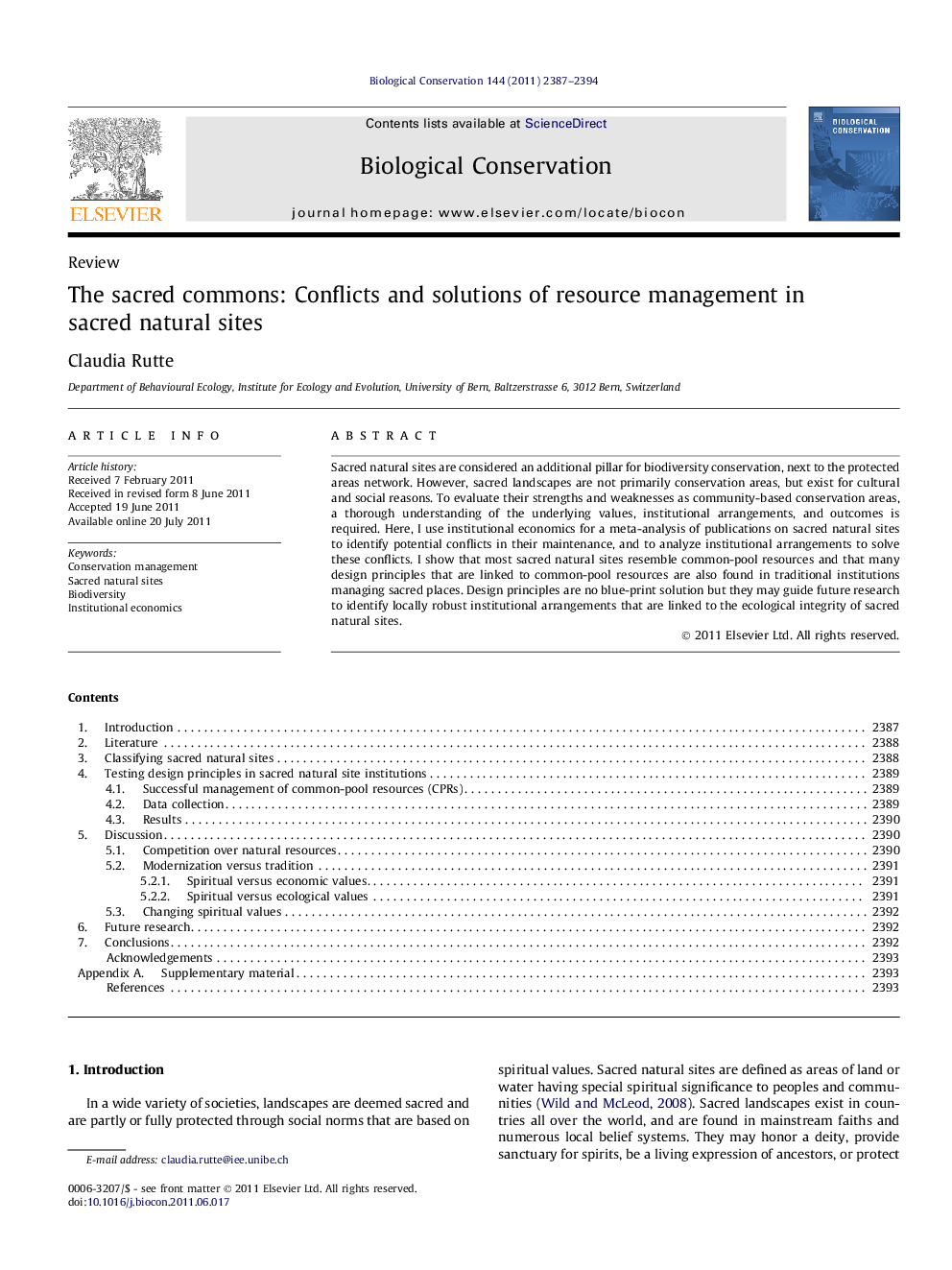| Article ID | Journal | Published Year | Pages | File Type |
|---|---|---|---|---|
| 4385406 | Biological Conservation | 2011 | 8 Pages |
Sacred natural sites are considered an additional pillar for biodiversity conservation, next to the protected areas network. However, sacred landscapes are not primarily conservation areas, but exist for cultural and social reasons. To evaluate their strengths and weaknesses as community-based conservation areas, a thorough understanding of the underlying values, institutional arrangements, and outcomes is required. Here, I use institutional economics for a meta-analysis of publications on sacred natural sites to identify potential conflicts in their maintenance, and to analyze institutional arrangements to solve these conflicts. I show that most sacred natural sites resemble common-pool resources and that many design principles that are linked to common-pool resources are also found in traditional institutions managing sacred places. Design principles are no blue-print solution but they may guide future research to identify locally robust institutional arrangements that are linked to the ecological integrity of sacred natural sites.
► Sacred natural sites exist for spiritual, cultural, social, economic, and ecological values. ► Biodiversity conservation is a concomitant value of sacred natural sites. ► Several conflicts of resource management may affect biodiversity negatively. ► Interdisciplinary research is required to improve conservation plans of SNS.
